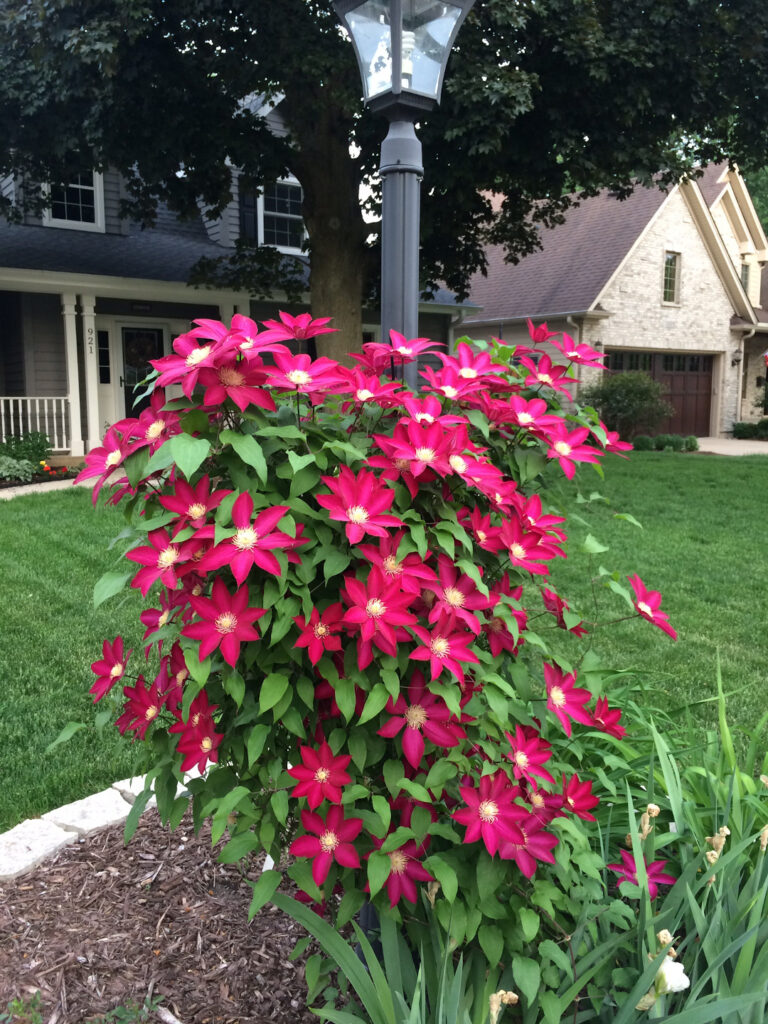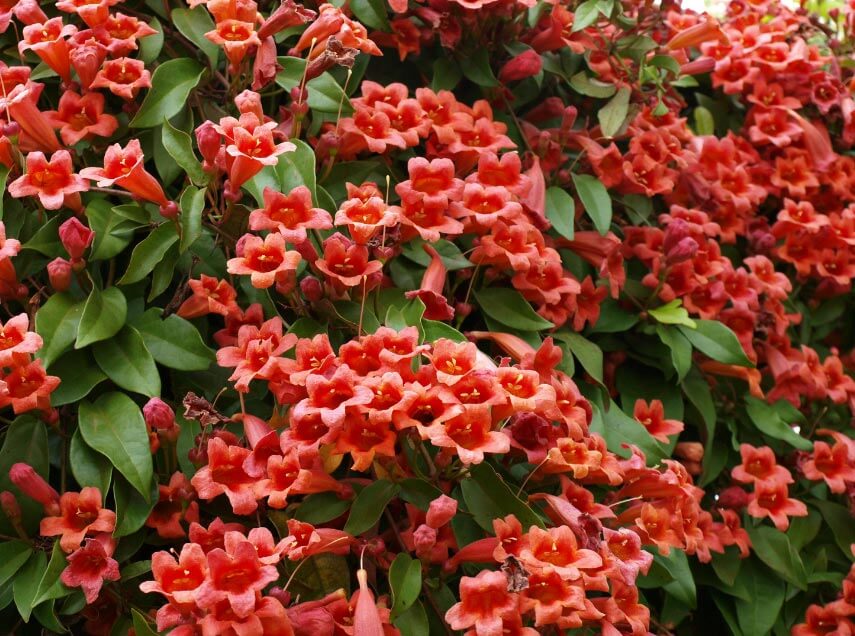 A clematis’ vining stems will happily scramble up trellises, over arbors and through other plants, creating a tapestry of beautiful color. This carefree climber blooms from early summer through fall, producing star-like blossoms that can be white, pink, red, blue or purple. It’s easy to fall in love with clematis, and fun to find new ways to use them in your gardens and landscape.
A clematis’ vining stems will happily scramble up trellises, over arbors and through other plants, creating a tapestry of beautiful color. This carefree climber blooms from early summer through fall, producing star-like blossoms that can be white, pink, red, blue or purple. It’s easy to fall in love with clematis, and fun to find new ways to use them in your gardens and landscape.
Follow these tips to growing your own beautiful clematis.
1. Do your research
There are many different clematis to choose from, and they come in a wide range of heights, bloom times, flower forms and colors. Rather than choosing a variety on impulse, it’s worth taking a closer look so you know what to expect. While there are compact cultivars that grow just 3-feet tall, other clematis can reach 20-feet or more. Flowering times can be late spring, summer or fall, with re-blooming types flowering both early and late in the season. Flower styles also vary from big, star-like singles to frilly doubles, delicate miniatures and even lovely bell-shaped blossoms. And then there’s color! Options include white, pink, red, burgundy, lavender, deep purple and even yellow. If you have the space, take a tip from British gardeners and consider planting two or more different varieties side by side. This will give you an ever-changing display of different flower styles, colors and bloom times.
2. How do Clematis climb?
Vines climb in several different ways. Some have twining stems (like morning glories) or tendrils (like sweet peas). Others have adhesive pads (ivy) or clinging stem roots (like climbing hydrangeas). Clematis use their leaf stems, which are able to coil like the tendrils of a pea vine. These twining leaf stems are relatively short and can only wrap themselves around something that’s less than about 1/4-inch in diameter. This is important to remember when it comes time to provide a trellis.
3. Find the right site
Clematis are long-lived and they don’t like to be moved, so choose the planting site carefully. The ideal location will have well drained soil that’s rich and loamy. They also prefer cool roots. In most cases, you can count on nearby plants to shade the soil. If the planting area is more open, plan to mulch the soil, keeping the mulch a few inches away from the stems. To maximize flower production, plant in full sun.
4. Careful when planting
The root system of a clematis is wiry rather than fibrous. One or even two-year-old plants are smaller than most perennials, but this is normal. Be very gentle when handling the plant, as the vines are brittle and can be easily broken. Dig a generous hole, add compost and mix well. Position the crown of the plant (where the roots meet the stem) 1″ to 2” below the soil surface. Backfill the hole and water deeply to settle the roots. Water regularly the first year. You can expect your plant to spend its first year getting established, with blooms coming in year two. Surrounding the young plant with a cylinder of wire mesh will help protect it from nibbling mice, rabbits, and voles. It’s important to provide a trellis, right from the start.
5. The proper support
There are some types of clematis that have a bushy growth habit, but most are born to climb. As with other climbing plants, the growing end of the vine is growing with purpose, always searching for something new to grab onto. When a vine can’t find anything to grab, the end stops growing and will die back. Providing the right type of support from the start helps the plant look good and grow well. Clematis vines can break very easily. Older stems look woody but will crack if they’re bent. Young stems appear to be supple but are actually brittle. This makes it difficult to rescue a plant that begins to flop midseason. To avoid heartbreak, make time in late spring and early summer to coral wandering stems and tie in top-heavy growth.
6. Pruning
Keep it simple: Pruning your clematis will increase its vigor and improve flower production. Officially, every clematis cultivar should be pruned according to a specific pruning style. Keeping track of which cultivar should be pruned in which way can be confusing. Some produce new growth on last year’s vines, while others set flowers on the current year vines. Please contact a Glen Echo associate for selection and proper pruning procedures.






